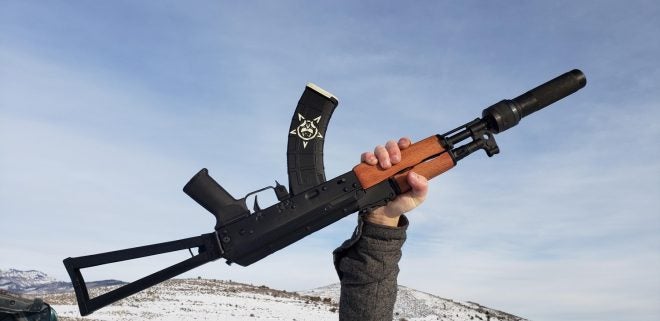Earlier this year I took it upon myself to source all the parts I needed for my “Dream AK”. The goal, take a Romanian DRACO, and turn it into the side folder AK I had always dreamed of owning. Many months and a tax stamp later, my dream AK was finally finished. Having finally received the finished product back from Troy at InRange AK I rushed off to the range. At the time, I hadn’t considered adding a KNS Adjustable Gas Piston.
TFB REVIEW: Dead Air Wolverine With The KNS Adjustable Gas Piston
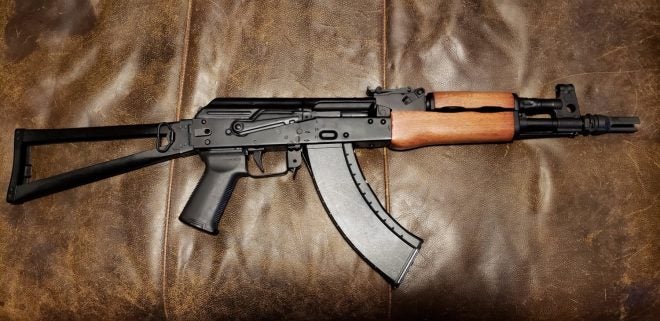
TFB REVIEW: Dead Air Wolverine With The KNS Adjustable Gas Piston
It was probably halfway through the second magazine that the new gun butterflies started to wear off. The jarring over gassed recoil, combined with the massive concussion that comes with having a short 12.5in barrel, was enough to make me want to put the gun back in the bag and go home. For the past three years I’d been shooting almost all of my rifles suppressed. Combine this with a cramped indoor range and shooting this rifle was borderline intolerable. I’d also gone a step further on my AR pattern rifles and added adjustable gas carriers. All of that customization lead to easy to shoot suppressed rifles. Something I was desperately missing.
I was aware of the two products in the AK world that I thought could remedy this issue, the KNS Adjustable Gas Piston, and the Dead Air Wolverine. Lucky for me, Dead Air Silencers is only a short drive away, and after a few phone calls arranged a sit down where I could ask Mike Pappas (Founder of Dead Air) more about the Wolverine PBS-1.
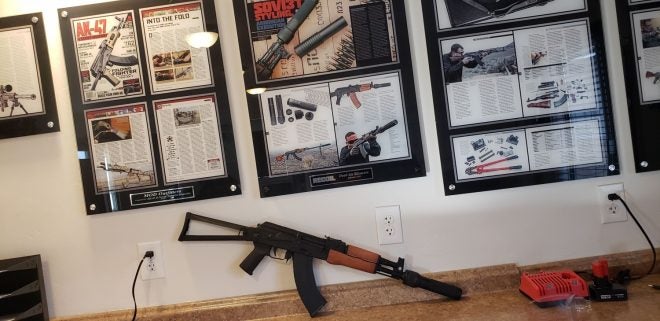
TFB REVIEW: Dead Air Wolverine With The KNS Adjustable Gas Piston
The Wolverine Story – Mike Pappas
How did this idea come about to make an AK can?
We felt like there was a hole in the market, because well, we like all guns. But the real reason we decided to focus on a AK, was because we felt like no one else had addressed the idea of a suppressed AK. That is, without building or tuning the whole platform for it.
Pre-SilencerCo, while I was at Get Some Guns and Ammo, I put a YHM can on an AK, and it just sucked. I remember shooting it once and it made me feel like my ears were going to bleed. There was just way too much back pressure and gas port noise. It was out of control loud. After the AR-15 boom, there was a large spike in AK sales as well. Overnight there were companies dedicated to the sole purpose of making AR-15 parts and accessories. Now we have similar market with companies that just make just AK parts, we felt like there was a large void in the market for an AK can.
What were you looking to accomplish when you set out to build the Wolverine?
We wanted to build a can that would work with any off the shelf AK, while having great gas port noise and overall tone. From there, we manufactured a ton of mounts to try and adapt it it to the various platforms.
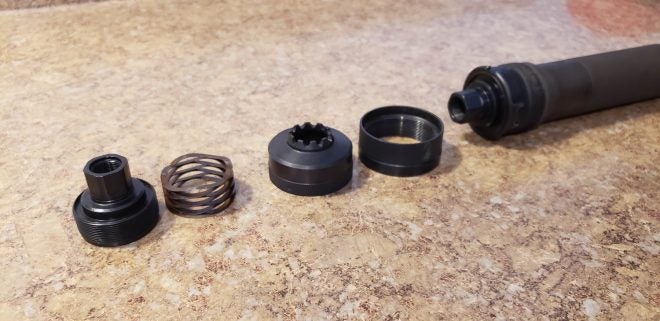
TFB REVIEW: Dead Air Wolverine With The KNS Adjustable Gas Piston
Was it your intention to make a silencer that looked like the Russian PBS-1?
No, with the size of the threads that were being used to mount inserts in the can, it got so large that it pushed the outer diameter of the can out. Sort of by accident, the can ended up looking like a Russian PBS-1. From there we shifted the contour of the can to look more like the original PBS-1.
What are the biggest differences between the Wolverine and the Russian PBS-1?
The PBS-1 was designed for subsonic ammo only, and we wanted to make a can that could would run full power ammo, as well as subsonic ammo. It had to be able to handle ammo like 5.56, 5.45, 7.62×39, and 7.62x54r. Later, we found out it worked pretty well on roller lock platforms like the HK G3 as well. Our main focus was making sure it accommodated the whole lot of combloc rifles. During testing we focused on 8in, 12in, and 16in barrels to make sure it was optimized for shorter barrels, like those found on Krinks and AK105’s.
Suppressing an AK
Prior to having an AK of my own, I had been fortunate enough to shoot one of Mike’s Post-Sample AK’s featuring both a KNS Piston and a Wolverine. As you’ll see in the below video, it’s incredibly low recoil for a 7.62×39 AK, making it very easy to shoot. KNS was kind enough to provide a piston for this review, and sent it over ASAP.
At this point in the review, I decided to switch things up and evaluate each product based on its own performance. First shooting my AK without the KNS piston, and with the Wolverine.
Note: Prior to all of this, I had been given a Dead Air 14x1LH Flash Hider to test on my DRACO. Rod from Dead Air was kind enough to throw an alignment rod through my Sandman-S/Flash Hider combo on the DRACO to make sure the threads were concentric. This is something you need to do on silencers that were not specifically designed for combloc rifles. I shot the gun on maybe two occasions with the Sandman-S. In this configuration the gun was so over gassed, and ejected cases so violently I thought they might take out low flying aircraft. Seriously though, it was bad.
To this end the Wolverine is worlds better, and in more ways than one. The over-sized end cap and overall nature of the can mean you don’t have to worry if your AK threads are perfectly concentric anymore. Once installed, the locking collar on the Wolverine indexes with the front sight pin and won’t walk off. When the first rounds were sent through the Wolverine, the most impressive part was the noise at my ear. Similar to how you might hear the recoil spring on a suppressed AR, the Wolverine lets you hear more of the mechanical action inside the receiver, without all the added gas port noise. Somehow it manages to accomplish all of this without over-gassing the rifle and significantly altering the factory ejection pattern. Remarkable, but not quite refined. Time to add the KNS adjustable piston.

TFB REVIEW: Dead Air Wolverine With The KNS Adjustable Gas Piston
Available in over fifteen different lengths, if you have an AK pattern rifle, KNS probably makes an adjustable gas piston that fits it. From an engineering standpoint, it’s an elegant solution. No matter the country of origin, AK pattern rifles all use the same long stroke gas piston system. The system is comprised of two primary parts. A piston head threads into the top of the bolt carrier, which is then secured by a single connecting rivet. Using the same patent pending design, KNS was able to manufacture pistons that could easily be installed in AK pattern rifles from varying host countries.
Take for example this Chinese NHM90 chambered in 7.62×39
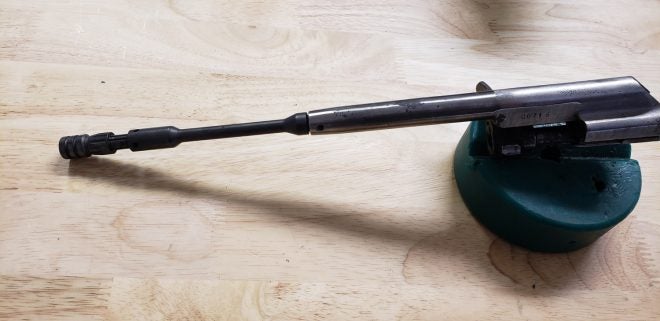
TFB REVIEW: Dead Air Wolverine With The KNS Adjustable Gas Piston
Or this Finnish M76 Valmet chambered in .223
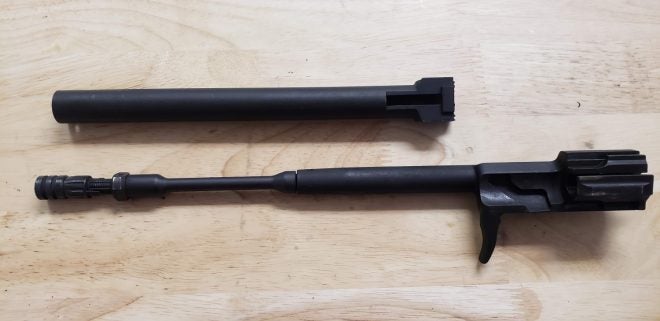
TFB REVIEW: Dead Air Wolverine With The KNS Adjustable Gas Piston
Here’s a video of the above M76 Valmet in action.
KNS Adjustable Gas Piston – Installation
With my DRACO apart, I was able to easily locate the rivet on my carrier by drawing a line around the end of the carrier with a sharpie.
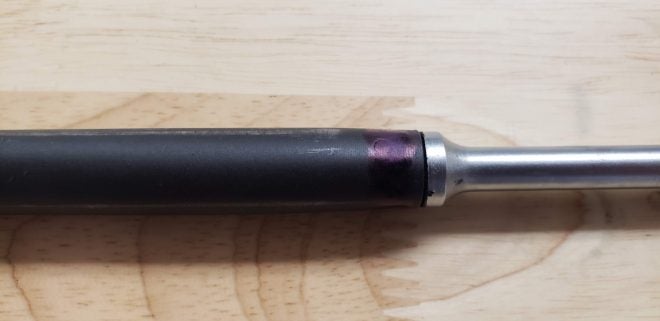
TFB REVIEW: Dead Air Wolverine With The KNS Adjustable Gas Piston
Now there are a few different ways to remove the rivet as KNS demonstrates on their product page. As I had someone to help me, I was able to remove the rivet using a punch and a standard armorers puck.
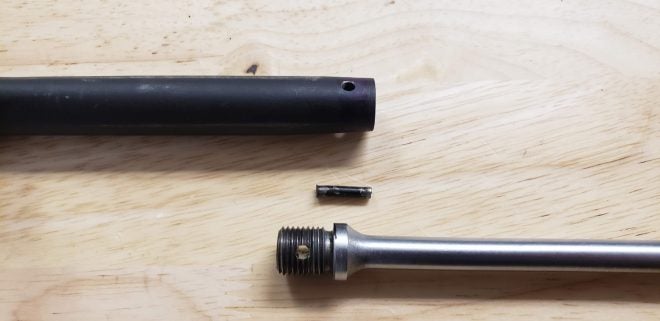
TFB REVIEW: Dead Air Wolverine With The KNS Adjustable Gas Piston
From there, you simply screw the new piston into the carrier until the hole in the piston is centered with the hole in the carrier. Then, using the same punch you simply tap in one of the two supplied roll pins. Now your new carrier piston combo is ready to be re-installed.
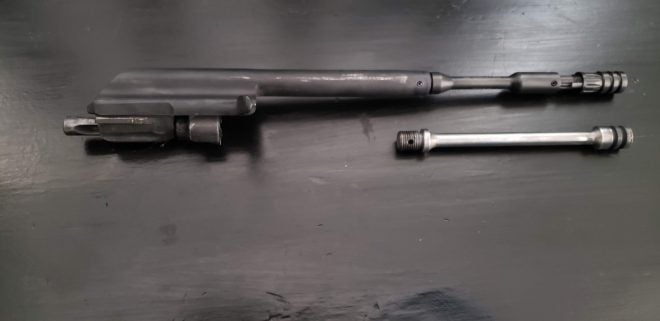
TFB REVIEW: Dead Air Wolverine With The KNS Adjustable Gas Piston
Tuning the KNS Piston
With the piston installed there’s a series of adjustments that have to be made to tune it properly. As the piston face is hollow, it allows gas to pass through the piston and out the back through a series of small slots. From the factory the threaded collar covers these slots completely.
With each click of the collar the piston moves back .1mm. I adjusted the piston 10 clicks back, fired a couple rounds, and then repeated this until the rifle didn’t have enough gas to feed another round. From there I adjusted the piston two clicks forward until the weapon had enough gas to cycle. At this point the spent steel casings were basically falling on to the ground next to me.
In order to retain the same level of reliability the AK platform is known for, I moved the piston 10 clicks forward from the “just barely able to cycle” setting. This provided a nice 4-5 foot ejection pattern, while still taking a massive bite out of the felt recoil. This ensured that the weapon would be reliable in the hands of any shooter.
End Result
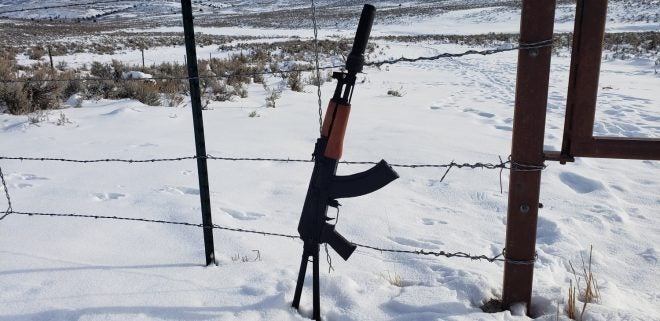
TFB REVIEW: Dead Air Wolverine With The KNS Adjustable Gas Piston
When I started sourcing parts for this AK, I really only had one goal in mind. Build a gun that could chew through cheap steel cased Wal-Mart ammo and didn’t need to be cleaned all the time. To that end, just your run-of-the-mill AK-47 pattern rifle will probably do the trick. Similarly, my finished AK was great to look at, ran perfectly with steel cased ammo, but wasn’t all that fun to shoot. Adding the KNS piston alone was able to remove at least 30% of the felt recoil, and provide a perfect 3’ o’clock ejection pattern. Needless to say, any future AK’s in my collection will have a KNS Piston installed. They’re really that good.
To that end the Dead Air Wolverine is the icing on the cake. Combloc rifles vary in almost every way imaginable, making silencer development quite the engineering endeavor. Dead Air did their homework, and managed to engineer a low back pressure silencer that works incredibly well across the whole combloc family of rifles. Using the same materials and engineering that make the Sandman series so durable, the Wolverine will handle full auto fire from any of the combloc family of rifles. Rugged construction in addition to the old school PBS-1 aesthetics make it second-to-none in the AK world.
Until I’m able to break a Wolverine PBS-1 out of jail, I’ll be using my Sandman-S on my KNS refined DRACO. In all honesty, this or any silencer will work on this platform if you tuned it correctly, and the threads were concentric. Where the Wolverine shines is as a mount, fire, and forget silencer. During multiple days of testing I never thought to worry about the silencer in any way. Once mounted, the silencer is as rock solid and rugged as the gun it was built for, and that’s what makes it the perfect combloc can.
We are committed to finding, researching, and recommending the best products. We earn commissions from purchases you make using the retail links in our product reviews. Learn more about how this works. Your Privacy Choices
Your Privacy Choices
